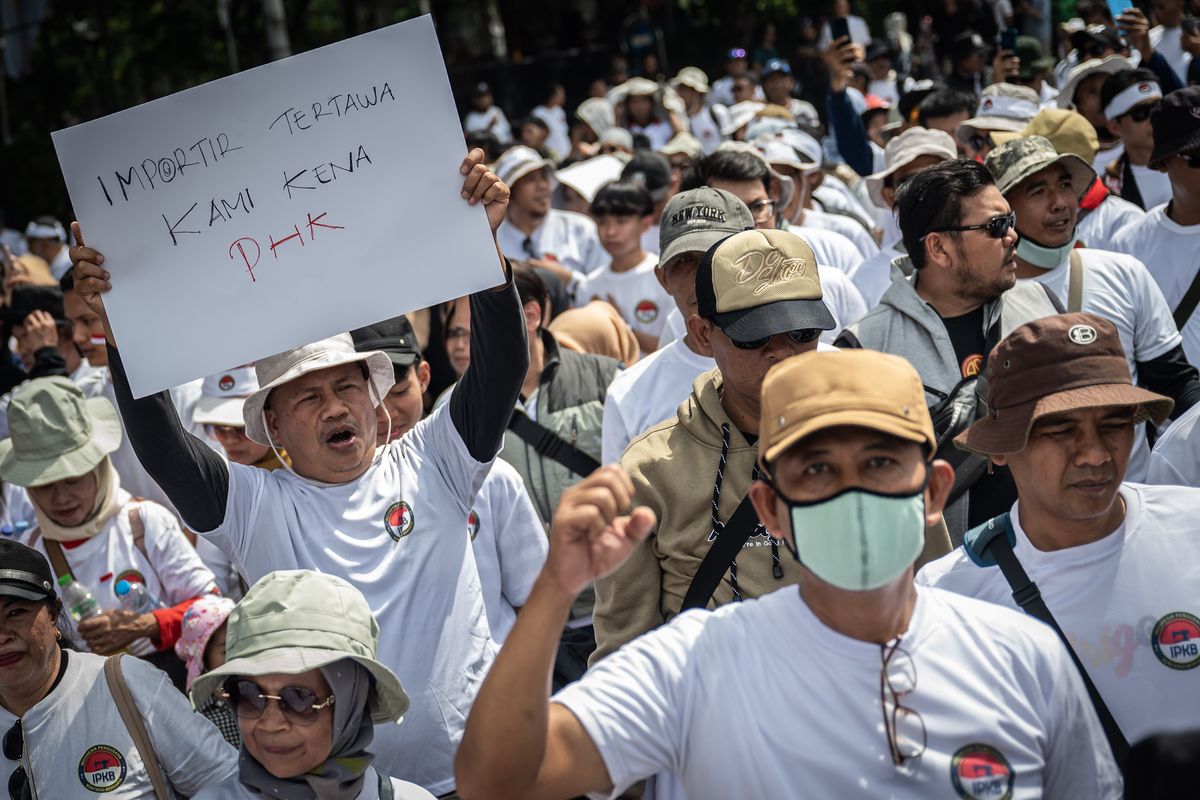Indonesia’s labor-intensive industries, long the backbone of employment in the country—are facing a steep decline, raising alarm among economists and labor experts. As mass layoffs in Indonesia grow more widespread in 2025, many are pointing to deeper structural issues in the country’s manufacturing landscape, calling for urgent reforms and government intervention. With thousands of workers already laid off and more job cuts expected, the economic and social impact is becoming impossible to ignore.
This article explores the causes, consequences, and potential solutions to the mass layoffs happening across Indonesia’s labor-intensive sectors.
Understanding the Labor-Intensive Sector in Indonesia
Labor-intensive industries rely heavily on human labor rather than automation. In Indonesia, these industries include textile and garment manufacturing, footwear, furniture, automotive components, and food processing. For decades, these sectors have supported millions of low- to middle-income workers and have been a key pillar of Indonesia’s non-oil-and-gas exports.
However, since 2023, signs of stagnation and decline have started to emerge. Demand from export markets has decreased, energy prices have risen, and global competition has intensified. With tight operating margins and limited flexibility, companies are turning to layoffs as a primary cost-cutting strategy.
The Scale of Mass Layoffs in 2025
According to recent reports by Indonesia’s Ministry of Manpower and labor watchdogs, the number of laid-off workers in 2025 is projected to exceed 150,000 by year-end. Already, in the first quarter alone, more than 60,000 workers have lost their jobs in sectors such as textiles, electronics, and footwear.
Key events include:
- Sritex Group, one of Indonesia’s largest textile producers, declared bankruptcy, laying off over 10,000 workers.
- Electronics manufacturers such as PT Sanken and PT Yamaha Music Indonesia have closed factories in Bekasi and West Java.
- Shoe manufacturers supplying to brands like Nike and Adidas have drastically reduced production lines.
Experts from the Indonesian Employers Association (Apindo) and Confederation of Indonesian Trade Unions (KSPI) suggest that if no stimulus is introduced, layoffs could spread to the food and furniture sectors by late 2025.
Causes Behind the Mass Layoffs
The wave of layoffs is not isolated—it is the result of multiple intersecting factors:
1. Declining Global Demand
Post-pandemic economic uncertainty in key export markets like the United States and Europe has caused a drop in demand for Indonesian-manufactured goods. With orders declining, factories are unable to maintain their workforce levels.
2. Increased Production Costs
Rising energy prices, raw material shortages, and logistical disruptions have made production more expensive. Many labor-intensive factories operate on thin profit margins and cannot absorb these costs without workforce reduction.
3. Exchange Rate Volatility
The weakening of the Indonesian rupiah against the US dollar has raised the cost of imported components, worsening operational pressures on factories relying on imported raw materials.
4. Stagnant Domestic Policy Support
According to economic analysts, Indonesia’s policy response has lagged behind the industrial shift. Labor policy reforms, wage controls, and export incentives have not kept pace with the needs of manufacturers, especially those dealing with global supply chains.
Social and Economic Consequences
The mass layoffs are expected to trigger a wave of economic disruptions. Most workers in the affected sectors are not covered by strong social security systems, meaning unemployment could drive more families into poverty.
Some of the projected consequences include:
- Rising unemployment, particularly among low-skilled workers and women, who make up a large share of the garment and textile workforce.
- Reduced consumer spending, which may affect local economies in industrial regions like Central Java, West Java, and Banten.
- Increased informal employment, as workers turn to gig work, street vending, or low-paying jobs without protections.
A recent survey from the Institute for Development of Economics and Finance (INDEF) found that 70% of laid-off factory workers have not found new employment within three months, and most lack access to formal reskilling programs.
Government and Industry Response
So far, the government has responded with cautious optimism. The Ministry of Industry has announced a new stimulus package targeting industrial zones, offering tax breaks and simplified regulations for companies retaining at least 80% of their workforce.
However, labor unions argue these measures are insufficient. KSPI President Said Iqbal has called for:
- A national moratorium on layoffs in labor-intensive sectors
- Increased budget for vocational training and upskilling programs
- Direct financial assistance for laid-off workers to prevent household collapse
Some regional governments, such as in West Java, have started job-matching platforms and microcredit programs to support affected workers, though the scale is still limited.
What Needs to Be Done: A Roadmap Forward
To avoid a long-term labor crisis, experts propose several urgent steps:
1. Revamp Industrial Policy
Indonesia must modernize its industrial strategy to support labor-intensive sectors through digitalization, supply chain integration, and energy subsidies for export-focused manufacturers.
2. Boost Workforce Reskilling
Government, private sector, and NGOs should collaborate to establish large-scale training programs that transition laid-off workers into growth sectors such as green energy, healthcare, and digital services.
3. Strengthen Social Safety Nets
The national government must expand access to unemployment insurance and food subsidies for displaced workers, while also supporting affordable healthcare and education for their families.
4. Promote Domestic Consumption
Encouraging domestic consumption of locally-made products through “Buy Indonesian” campaigns and public procurement policies could help stabilize factory output and employment.
Conclusion
- The ongoing wave of mass layoffs in Indonesia's labor-intensive industries is more than just a cyclical downturn—it is a reflection of deeper vulnerabilities in the country’s industrial base. Without decisive policy action, the layoffs could snowball into a broader employment and social crisis. Government, industry leaders, and civil society must act swiftly and collaboratively to cushion the blow, retrain the workforce, and chart a new path for sustainable, inclusive industrial growth.







 Sunday, 21-12-25
Sunday, 21-12-25







